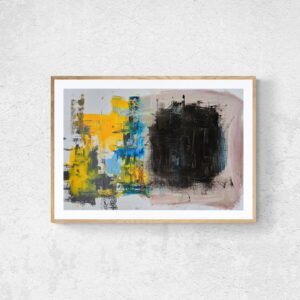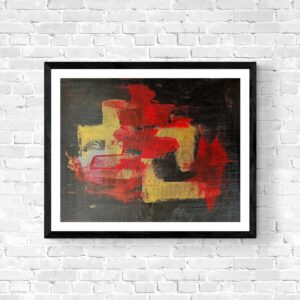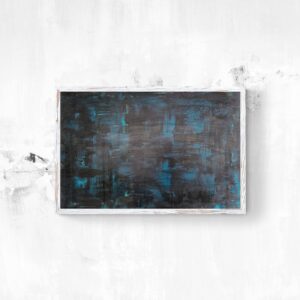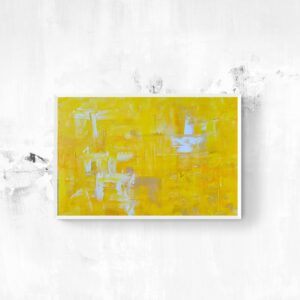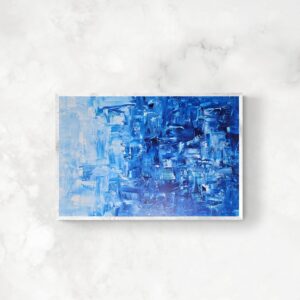
SASKATOON, Canada — Contemporary Caribbean art exhibitions at an institutional level are all too rare. Those that reflect an understanding of the region’s intertwined histories are particularly uncommon. So I can say, as a Trini-Canadian writer and curator, that my encounter with Land. Sea. Sugar. Salt.: Terrestrial and Aquatic Contemporary Contemplations of the Caribbean at the Remai Modern felt unexpectedly familiar, close, and even astute. It’s a feeling I have longed for, at a seemingly unlikely institution (especially at a time when Caribbean art exhibitions at Western institutions appear to be under threat) — a modern and contemporary art museum near the banks of the South Saskatchewan River, within Treaty 6 Territory.
But first, what to make of the show’s willfully long name? Perhaps it’s a sly prick at those ethnographic studies of yore, with their protracted titles — a way to unsettle the waves of coloniality and exploitation long pervaded by non-Caribbean curators. However, curators Michelle Jacques and Sally Frater, both of the Remai, are Caribbean-Canadian themselves, and focus on artists from the Caribbean region and its diaspora. So far, their collaborations at the Remai have been fortuitous — for instance, with the Art Gallery of Ontario, they co-organized the first touring retrospective of the late Trinidadian-Canadian painter Denyse Thomasos, which received widespread praise.
As someone invested in contemporary Caribbean art exhibition-making, Land. Sea. Sugar. Salt. seemed initially like a retread. A majority of its participants appeared in Frater’s Kept Alive Within Us. The 2023 group exhibition at the Art Gallery of Guelph (AGG) in Ontario was equally concerned with artists connected to the Caribbean and its natural environments. Yet, where the AGG show felt uneven and scattershot to me, this one is muscular and focused.

It helps that Frater and Jacques smartly anchor it with Deborah Jack’s stunning and profound multi-channel video installation “the fecund, the lush, and the salted land waits for a harvest…her people…ripe with promise, wait until the next blowing season” (2022), commissioned for the MCA Chicago’s Forecast Form: Art in the Caribbean Diaspora, 1990s–Today. The work’s stirring violin soundtrack pulls audiences into scenes of crashing waves and swirling sea foam, setting a tone of solemn contemplation. Jack juxtaposes archival black and white documentary footage of the salt-mining industry in Sint Maarten, her mother’s home island, with present-day technicolor bursts of pomegranate trees; the light from the projections reveals, at times, lines from a poem printed on cut mirrored vinyl about the sky, sea, and salt.
Situated near framed photo-based pieces by Hew Locke and Giana De Dier featuring Guyanese and Barbadian vernacular architecture, respectively, Jack’s piece is a psychogeographic remapping of the region that collapses time, revealing both fractures and legacies. Following hurricanes Irma and Maria in 2017, which devastated both the Dutch Sint Maarten and French Saint Martin, the presence of coastlines in Jack’s work recalls Christina Sharpe’s concept of “wake work.” It is attendant to how those ever-increasing hurricane surge patterns mirror the very same ship routes of the transatlantic slave trade, disrupting ongoing contemporary colonial machinations in emergency response and recovery, complicating the tropical escapism.

Across the show, the curators choreograph works by the different participants as duos and trios, creating dialogue that could only be present in a group exhibition. Selfishly, as a Trini-Canadian, I felt most drawn to the hybrid aesthetic forms in installations by Caribbean-Canadian artists Braxton Garneau and Kara Springer. Garneau’s “Pay Dirt” (2025) visually melds the landscapes of Alberta’s tailing ponds and Trinidad’s Pitch Lake to draw a correlation between the two sites’ oil-based economies. Set against a black backdrop, oversized fishtails and diminutive natural asphalt lakes blur the lines between the geological and the museological: Are we looking at a museum diorama, a 3D topographic map, or both? Meanwhile, Springer’s light box image, “The Earth and All Its Inhabitants” (2019), shows a ladder apparently standing straight up in the ocean. According to the didactic, the ladder stands in the Atlantic Ocean near Barbados, where Springer was born; it is captured in the photographic image just before it teeters back into the water. The light box is strapped to a palette, evoking the artist’s ongoing concern for armature (in this case, the strap) as a system of structural support “that holds the flesh of a body in place.”
The work, like others in the show, reflects on the vastness and precarity of the Caribbean landscape, the ebb and flow of its rising sea levels, and coastline erosion. The sadness and grief over the instability of its terrain and built environments contrasts with the survivance — to borrow the term from Anishinaabe scholar Gerald Vizenor — found in ancestral knowledges, as attested in video installations by participants like Las Nietas de Nonó and Carolina Caycedo. While the contested notion of “paradise” is a well-trodden trope in Caribbean art curation, Land. Sea. Sugar. Salt. is savvy in its nuanced approach to the region’s aesthetic practices and structures of visuality, particularly in how this extends into its diaspora. More metaphorically, the group exhibition explores what it means to be “there” still while being “here,” and all the complicated feelings that come with it.






Land. Sea. Sugar. Salt.: Terrestrial and Aquatic Contemplations of the Caribbean continues at the Remai Modern (102 Spadina Crescent East, Saskatoon, Saskatchewan, Canada) through August 17. The exhibition was curated by Sally Frater and Michelle Jacques.

